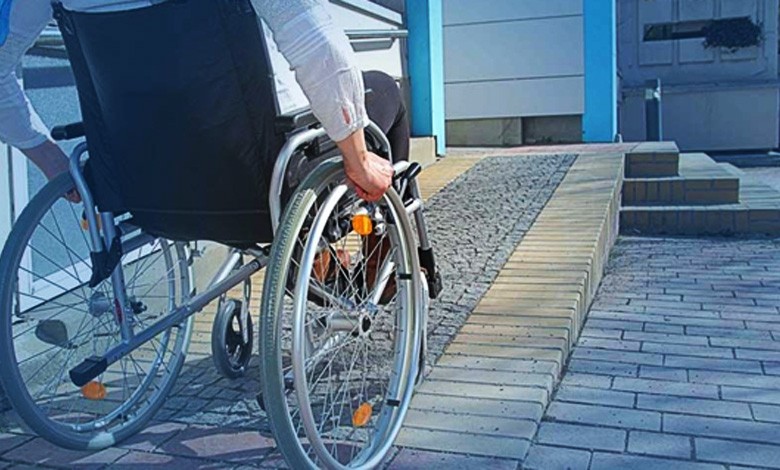Innovating in accessibility: how MOH standards help create an inclusive environment

Barrier-free is a philosophy of a society without restrictions, not for specific layers and segments of the community, but for everyone without exception. This is the willingness of every member of society to participate in establishing a comfortable environment where everyone will be comfortable. IA “FACT” already wrote about ways to ensure equal rights for people with disabilities in Ukraine. Today we will turn to the topic of feedback in the testing of the inclusive space, because it needs constant improvement, taking into account the needs of vulnerable categories of the population.
Accessibility is not just about ramps
Accessibility is usually associated with ramps: they represent the community’s care for people with disabilities, because they catch the eye, although they often do not fulfill the task assigned to them, as they are built in violation of accessibility rules. Meanwhile, a barrier-free space is not only about ramps and removing obstacles to the movement and use of social opportunities for people with disabilities.
It is also information barrier-free, which involves presenting information in various formats so that all people have access to it, regardless of their functional impairments and communication capabilities. It’s not just about using braille or sign language, but also about using plain language in the presentation of information and fonts that are easy to understand. Among them, in particular, are fonts Verdana, Arial, on the other hand, Times New Roman is considered difficult to read.
It is also social and community barrier-free — all people should have access to all social processes, equal opportunities to participate in community life, cultural life, etc.
Everyone should have equal access to high-speed Internet, public services and public information, which is assumed by digital accessibility.
Barrier-free education is also highlighted – equal and free access to education, and not only school education, but also lifelong education, professional development and the acquisition of a new profession.
Economic barrier-freeness is also important — conditions and opportunities for professional activity, entrepreneurship, are equally provided to all citizens, regardless of their sociodemographic characteristics or state of health.
To improve the barrier-free space, feedback is needed
It is clear that people with disabilities can best assess the level of accessibility, so their feedback is most valuable. At the same time, the developers of barrier-free environment standards take into account the evaluations of civil society institutions and employees of medical facilities.
This is exactly the approach to testing a barrier-free space provided for by the Order of the Ministry of Health of Ukraine dated June 3, 2024 No. 955. It offers an information tool for setting up feedback — a checklist that will allow evaluating the introduction of barrier-free principles in a health care institution during the provision of medical and rehabilitation services.
How does the Ministry of Health propose to assess accessibility?
To assess barrier-free accessibility for all types, the checklist draws attention to several key aspects.
Physical accessibility covers access to buildings, which includes the availability of ramps, lifts, wide doors and barrier-free passages for people with reduced mobility. Landmarks such as tactile surfaces and contrast markers for people with visual impairments, as well as inclusive bathrooms equipped specifically for people with disabilities, are also important.
Information barrier-free implies the availability of information. This includes information boards, audio and visual announcements, and the use of Braille for the visually and hearing impaired. Websites must be adapted for users with different types of disabilities, including sensory impairments.
Social accessibility is to provide inclusive programs and services that support the integration of people with disabilities into society. This includes equal opportunities for education and employment.
Economic accessibility covers the adaptation of financial services for people with disabilities, including accessible ATMs and internet banking. It is also important to support enterprises that employ people with disabilities through various incentive measures.
Psychological barrierlessness includes access to psychological help and mental health support programs. The attitude of the staff also plays an important role; employees must be trained to interact with people with disabilities, demonstrating a respectful and tolerant attitude.
Cities with barrier-free space
Lviv works to ensure the accessibility of sidewalks, pedestrian zones and public buildings. The “Barrier-Free City” project is implemented here, which includes the adaptation of city infrastructure for people with disabilities.
In particular, the “Sensoteka” operates, which offers to touch literature in the literal sense of the word. In this institution, you can read an interesting book, visit an event or exhibition, a master class, and play an interactive game. The main feature of “Sensoteka” is accessibility for people with disabilities, in particular, the ability to perceive information using the Louis Braille font.

In Odessa, measures are being implemented to ensure the physical accessibility of beaches, parks and other public places. There are specially equipped beaches for people with disabilities. And although closed due to war, the beaches remain a testament to the important work of creating a more accessible and inclusive environment for everyone.

In Kharkiv, some universities and schools are adapting their premises for students and pupils with disabilities, providing unhindered access to educational buildings and classrooms.
However, the best implementation of the barrier-free space concept in Ukraine is currently observed in the city of Dnipro. The Dnipro City Council approved the Program for the Creation of Barrier-Free Space for 2024-2028. It is aimed at creating a comfortable environment for all residents of the city, regardless of their physical capabilities.

The program includes comprehensive measures to ensure equal opportunities in various areas of life, such as self-realization, education, employment and development of personal potential. It covers physical, digital, social, economic and political accessibility, as well as care for the mental health of citizens.
This systematic approach makes Dnipro a leader in the implementation of barrier-free access in Ukraine, demonstrating an exemplary example for other cities of the country.





